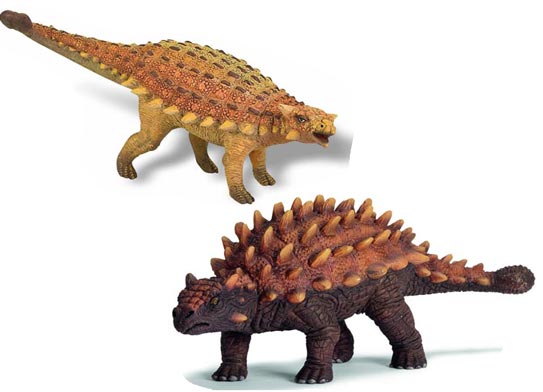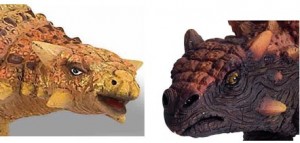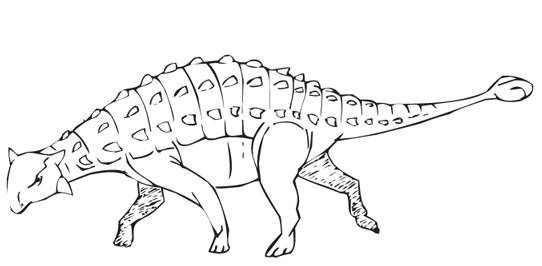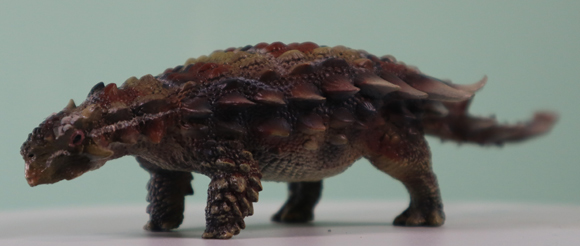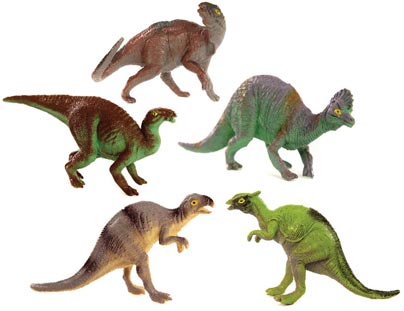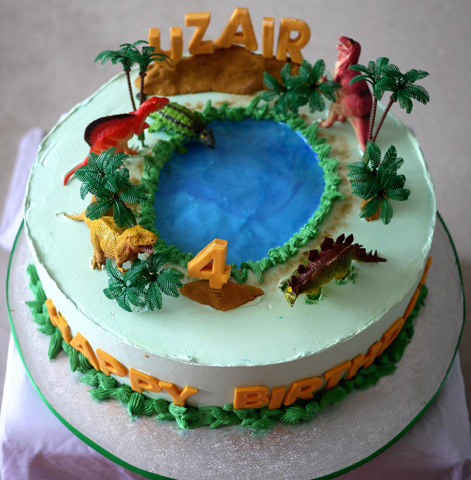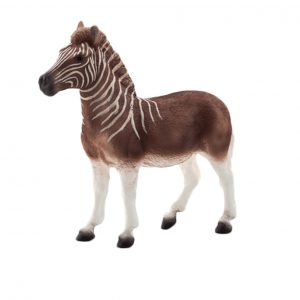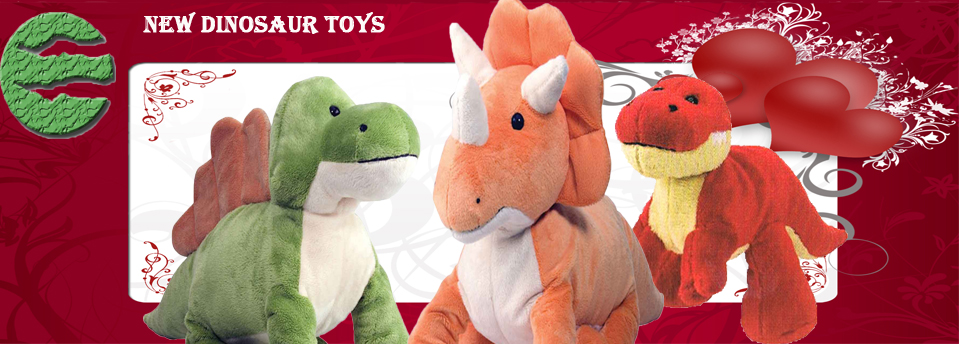Dromaeosaurs with Poison Fangs. Was “Dave” Poisonous?
Scientists postulate that the dromaeosaurid Sinornithosaurus was venonmous.
The movie Jurassic Park is arguably one of the most famous dinosaur films of all time. It was certainly one of the most successful at the box office. However, the author of the book upon which the film is based, Michael Crichton, who sadly passed away last year, could hardly have guessed that some of the pseudo dinosaur science in the movie could actually turn out to be true.
To read more about Michael Crichton: Jurassic Park author Michael Crichton passes away.
In the first Jurassic Park movie, a venomous dinosaur is encountered. Known as a “spitter” this theropod, loosely based on the Jurassic meat-eater Dilophosaurus, spits venom at its victims faces, rendering them blind and helpless, thus permitting these movie beasts to overpower their prey without too much danger to themselves. The evidence of venom in Dilophosaurus is, as far as we can recall never been found, however, a group of US based researchers, along with research colleagues from China, have published a paper that indicates that another type of theropod may have been poisonous and equipped with venom delivering fangs.
A Replica of Dilophosaurus Based on the “Jurassic Park” Interpretation
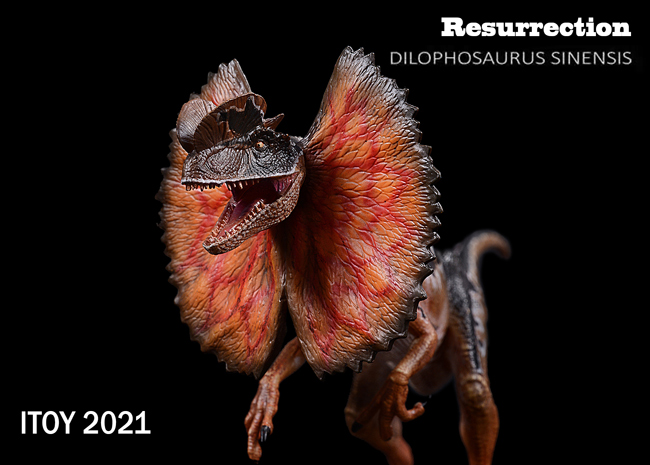
A view of the superb crest on the ITOY Studio Dilophosaurus dinosaur model.
To view the ITOY Studio range of prehisoric animal models: ITOY Studio Prehistoric Animal Models.
Primitive Dromaeosaur
The dinosaur in question is the primitive dromaeosaur Sinornithosaurus (the name means “Chinese bird lizard”, a metre long theropod from the Jehol biota of the famous Liaoning Region of northern China. The upper teeth in the top jaw (maxilla) resemble the teeth of “rear-fanged” snakes which bite their prey and channel venom into the wound. Rear-fanged snakes, also known as “back-fanged” snakes are so-called because their fangs are at the back of the jaws instead of the front.
The fangs themselves are grooved on the latero-anterior of the tooth (front and side surface), instead of being hollow to allow the injection of venom as in front-fanged snakes. Rear-fanged snakes usually prey on small animals such as mice, rats, lizards, birds and frogs. They need to use a chewing action in order to bring their prey to the rear part of their mouths to inject the poison. A rear-fanged snake is said to be opisthoglyphous.
Perhaps the most deadly of all the rear-fanged snakes is the African Tree Snake or Boomslang (Dispholidus typus). This arboreal snake has a range across much of the woodland terrain of sub-Saharan Africa. The largest snakes are up to 1.4 metres long and their normal prey is chameleons, other lizards, as well as tree frogs and small birds. The venom is extremely toxic, destroying the fibrinogen in the blood and causing internal bleeding. One bite can prove fatal to an adult human.
The Liaoning discoveries date from approximately 135 – 110 million years ago (Cretaceous). Animal and plant remains deposited on the floors of lakes have been preserved by fine-grained volcanic ash that rained down on the lake’s surfaces and settled on the lake bed.
Sinornithosaurus
Scientists from the University of Kansas (USA), and colleagues from the Northeastern University of Shenyang, China, have published a paper detailing the evidence of a venomous dinosaur in the scientific journal “The Proceedings of the National Academy of Sciences”. The Sino-American team point out that the some of the teeth in the maxilla of Sinornithosaurus resemble those of rear-fanged snakes which bite prey and channel venom down a groove in the teeth into the flesh of the victim.
The jaws of many Dromaeosaurs have more teeth than the fearsome tyrannosaurs, Velociraptors for example had approximately 80 teeth in the jaws whilst the fearsome Tyrannosaurus rex had approximately 60. The shape of the teeth are also different. One thing meat-eating dinosaurs seem to have in common is their ability to open their jaws very wide. For a suspected rear-fanged dinosaur such as Sinornithosaurus the ability to get prey items adjacent to the venom delivering teeth would have been essential.
Diagrams of the skull and jaws of Sinornithosaurus show the over-sized teeth in the maxilla with the grooves and the sub fenestral fossa – the proposed site of a venom gland that stored the poison prior to its delivery along the tooth groove. The upper teeth of this particular primitive dromaeosaur appear to be over-sized and fang like (maxillary fangs).
Perhaps the finest dinosaur fossil ever found, certainly one of the most complete and detailed is the fossil called “Dave”, believed to be semi-adult Sinornithosaurus. This fossil from the Jehol biota is beautifully preserved and there is the slab and counter slab components making this little feathered dinosaur one of the most complete specimens ever discovered. The fine, feathery filaments are clearly seen, indicating feathers in non-avian dinosaurs. The dinosaur was named “Dave” as a cultural reference to a comedy sketch where two people try to describe the location of a friend called Dave.
The confusion surrounding their conversation reflects the problems American palaeontologists had when trying to converse with their Chinese colleagues, as they did not share a common language.
Venomous Dinosaurs?
Does this new research indicate that “Dave” was venomous?
The grooves in the teeth can be seen in the close up of the skull, the arrows point to some of the grooves. The scientists who produced this new paper have speculated that this little carnivore predated upon the abundant birds which inhabited the wooded environment that Sinornithosaurus is believed to have lived in.
Kansas University Professor Larry Martin commented:
“This thing [Sinornithosaurus] is a venomous bird for all intents and purposes”.
Researcher David Burnham stated:
“You wouldn’t have seen it coming. It would have swooped down behind you from a low-hanging tree branch and attacked from the back. It wanted to get its jaws around you [hence the large gape]. Once the teeth were embedded in your skin the venom could seep into the wound. The prey would rapidly go into shock, but it would still be living, and it might have seen itself being slowly devoured by this raptor.”
The joint US and Chinese team also state that there is evidence in the upper jaw of a venom gland. The evidence for venomous dinosaurs can be doubted, for example, a number of creatures alive today have grooves in their teeth similar to those seen in the fossils of Sinornithosaurus but these animals are not poisonous. A primate called a Mandrill has grooves in its teeth but these are not associated with the delivery of poison.
Scientists believe the teeth are grooved to make them easier to extract from their victim as they bite or from a carcase as they feed. The large teeth in the maxilla of this little dromaeosaur could have evolved to help this dinosaur pierce the thick plumage of birds as it attacked them and then to extract the teeth from the bird’s body as it bit down into them. The grooves may not necessarily indicate the presence of venom.
It is believed that this little dinosaur roamed the undergrowth of the Chinese forests around 128 million years ago (Barremian faunal stage), feeding on animals smaller than itself. Why it needed to evolve venom if it fed on small birds is not made clear, some of the birds around at the time were less than 10cm long, not much bigger than a garden robin and when it is considered that this fast-running, predator was over 10 times the size of the birds, the evolution of a toxic venom to subdue victims seems a little superfluous. Of course, if Sinornithosaurus lived in flocks and attacked larger prey then the ability to poison its victims would have made greater sense.
The complexity over the evolution of poisons in the Animal Kingdom was brought into focus recently when it was proved that the Komodo Dragon (Varanus komodoensis) had a venomous bite to help it overwhelm large prey items such as water buffalo and deer. It had been thought that the largest species of lizard alive today had a bacterial bite which poisoned prey, with bacteria being introduced into any bitten wound via saliva or bacteria living on the surface of the teeth, but it has now been proved that these huge lizards are venomous.
To view the huge range of dinosaur models available from Everything Dinosaur: Dinosaur and Prehistoric Animal Models.
